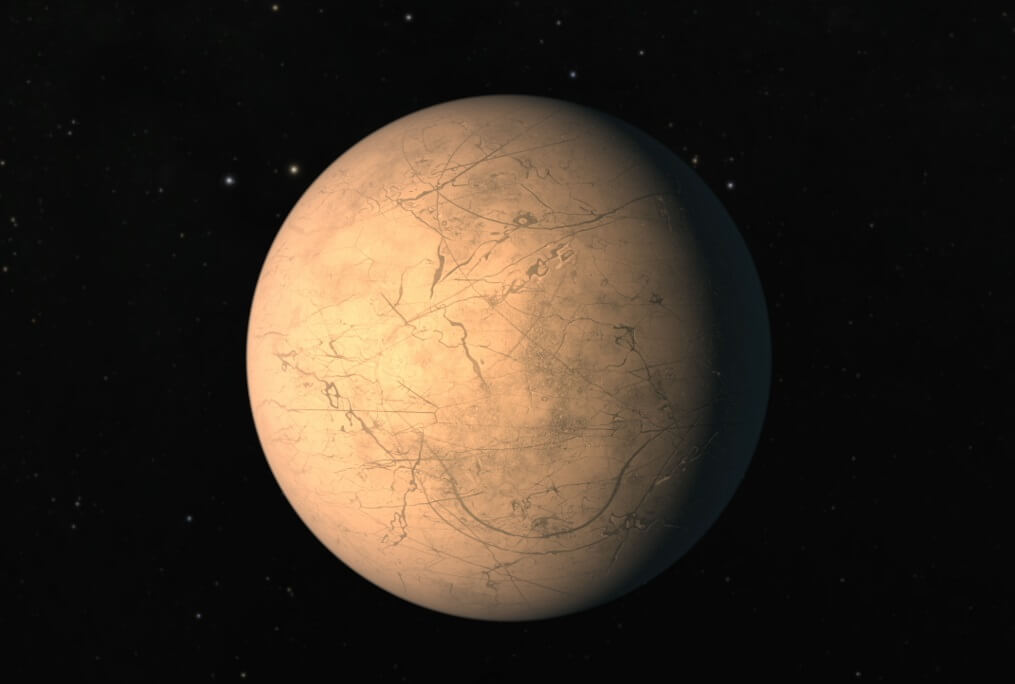- Get link
- X
- Other Apps

TRAPPIST-1h in the artist's view
The planetary system TRAPPIST-1 now clearly can not complain of a lack of attention. Astronomers from all over the world are looking their way in her direction and are trying to find out more about it. At the moment we know that the system has 7 planets. Three planets are in the inhabited zone of the star, which in theory may mean that the planets can have water and even life. We also know that the planets of the system around the ultracold dwarf are wrapped around, and are very close to it. This can be both good and bad news, depending on which side to look at. And now scientists have found out also some facts about the farthest planet of the system.
The results of a new study, published on May 22 in the journal Nature Astronomy, reveal some details about the orbit of the planet TRAPPIST-1h. Using data collected by the Kepler Space Telescope, a team of researchers was able to verify the predictability of the rotation speed of 6 planets of this system. The gravitational forces of each of these planets allow the system to remain stable.
"Let's take the last planet of this system. When it makes 2 orbital turns, then the planet going in front of it, makes 3 turns. Going before the penultimate, it's already making 4 turns in the same time, and according to the same scheme, the remaining planets make 6, 9, 15 and 24 turns, "says the astronomer of the University of Toronto in Scarborough Dan Tamayo.
"This is called a" resonance chain ". And, perhaps, this is the longest chain of resonances that we had to meet with planetary systems. "
Using this information, scientists were able to determine the orbital period of the planet TRAPPIST-1h. The complete revolution around the star the planet commits over 19 terrestrial days. TRAPPIST-1h is located about 9.6 million kilometers from its star. Therefore, scientists say, most likely, it goes beyond the habitable zone. Thus, it can be assumed that it is not able to support the existence of life. This is also indicated by its temperature characteristics. According to the NASA aerospace agency, the amount of energy that the planet receives from its star is similar to the level that the dwarf planet Ceres receives, located in the asteroid belt of the solar system.
"We found out that the radius of the planet TRAPPIST-1 h is about 0.725 R, and the steady temperature on its surface is about 173 K (-100 degrees Celsius). It is the coldest in this system. We also measured the period of rotation of the star. It is 3.3 days. A few low-power flashes on its surface were noted. In general, the star behaves quite calmly for the dwarf of class M, located in the middle of its life cycle. "
The article is based on materials .
- Get link
- X
- Other Apps
Comments
Post a Comment